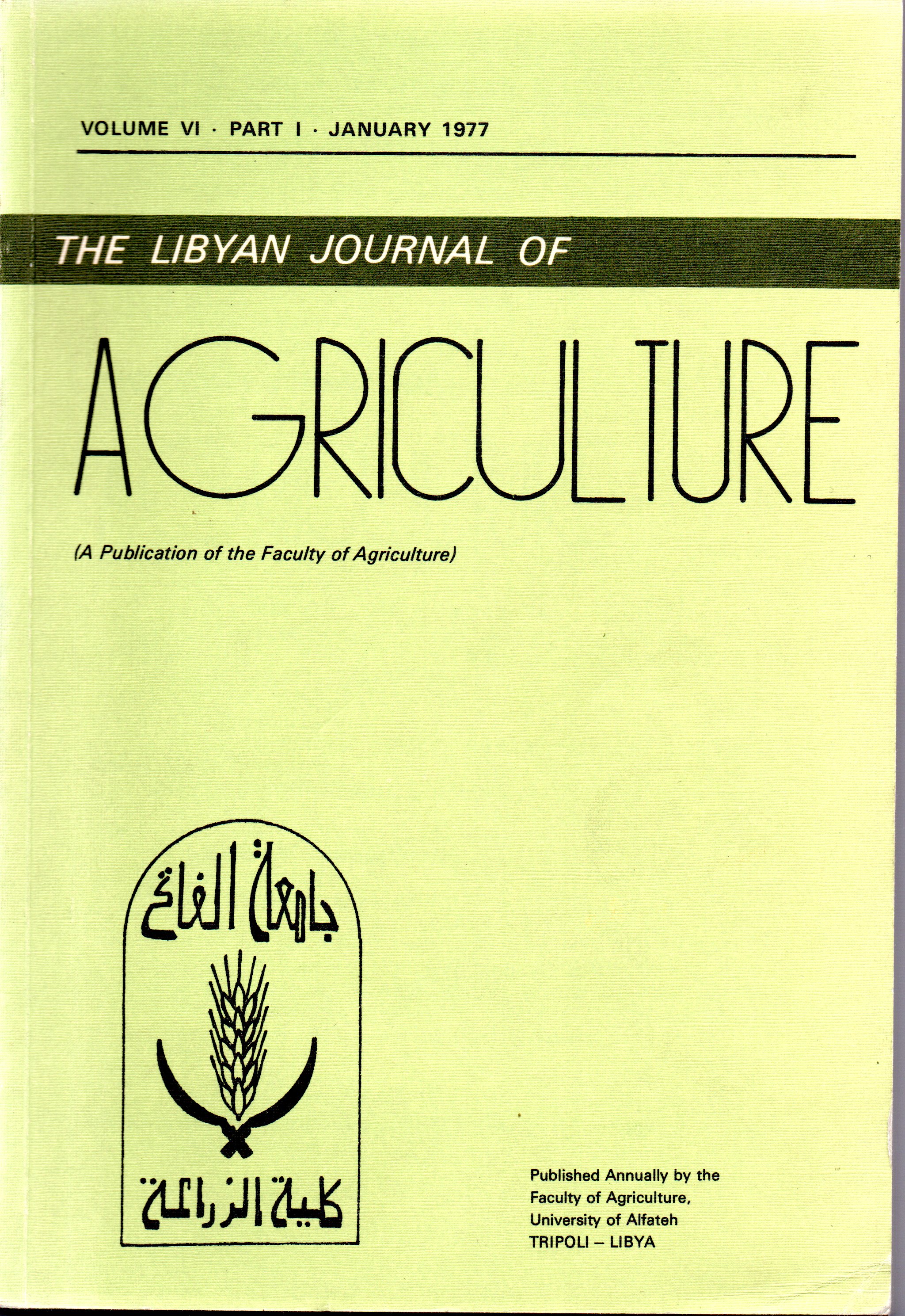Effect of Nitrogen Level and Soil Moisture Stress on Growth, Yield, and Yield Components of “Sidi Misri 1” Wheat (Triticum Aestivum L.)
Main Article Content
Abstract
The effect of nitrogen level and soil moisture stress on growth, yield, and yield components of the semi-dwarf wheat cultivar “Sidi Misri 1” was studied in a field experiment at the faculty of Agriculture Farm, Tripoli, in the 1974/1975 season.
Plant height, spike length, tillering, and number of spikes per plant were increased by increasing the nitrogen level and soil moisture content up to 40 centibars. These measurements generally decreased at the highest moisture stress (70 centibars). The maximum plant height and number of tillers per plant were obtained at the highest nitrogen level (200 kg N/ha) and the highest moisture stress (70 centibars).
The average total yield, grain yield, and straw yield were increased due to the increase in nitrogen level and irrigation when compared with the rainfed treatment. The total yield and straw production were significantly increased with the increase of soil moisture content up to 40 centibars. The highest grain yield (5.725 tons/ha) was obtained with the highest nitrogen application of 200 kg N/ha and the highest water stress of 70 centibars. Nitrogen level X water stress interaction for grain yield was significant.
The average harvest index and average grain yield per plant were highly significantly increased due to the nitrogen level and irrigation treatments.
The average number of grains per plant was increased by either increasing the nitrogen level or decreasing the soil moisture content. A highly significant interaction was found between the nitrogen level and soil moisture content in respect with the weight and number of grains per plant. The highest values of these parameters were attained with the combination of 200 kg N/ha and 70 centibars moisture stress.
The average grain weight and number per spike increased as the nitrogen level increased, and the soil moisture content decreased.
The average number of grains/m2 highly significantly increased due to the increase in nitrogen level and the decrease in soil moisture content.

